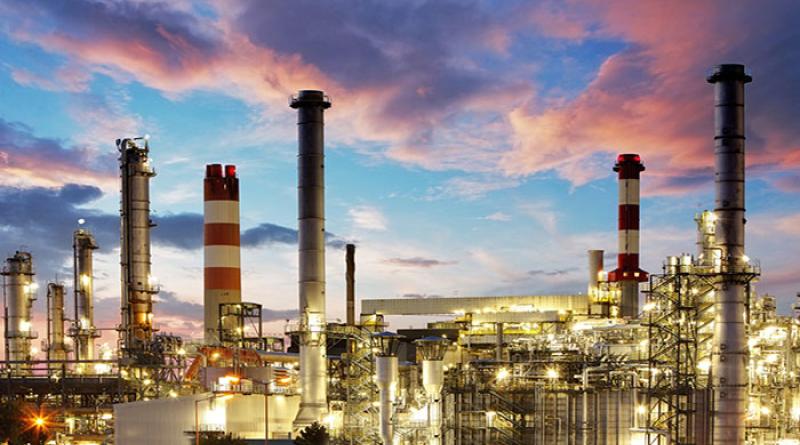Pakistan weighs early closure of some gas, diesel power plants under ADB scheme

KARACHI: Pakistan is exploring the possibility of shutting down some of its gas- or diesel-fired power plants before their economic lifetime ends, as part of a low-carbon energy transition supported by the Asian Development Bank (ADB), a think tank said.
The Institute for Energy Economics and Financial Analysis said in a report that three medium-sized, middle-aged thermal plants could offer a good balance of incentives to the government, plant owners, and prospective investors while reducing carbon dioxide emissions.
The report was based on an assessment of Pakistan’s participation in an Energy Transition Mechanism (ETM) being brokered by the ADB. The ETM aims to help developing countries with high carbon lock-in to switch to renewable energy sources by providing concessional financing and private-sector capital.
The country’s young coal fleet could also deliver significant environmental benefits from early decommissioning but was more suited to a phase-out after the completion of its debt servicing period.
“Through the ETM, Pakistan has an opportunity to stay ahead of the curve if it is prepared to phase out certain fossil fuel assets which are an economic burden on the country,” says Energy Finance Analyst Haneea Isaad, who co-authored the research report with Grant Hauber, Strategic Energy Finance Advisor, Asia.
“Through the ETM, Pakistan has an opportunity to stay ahead of the curve if it is prepared to phase out certain fossil fuel assets which are an economic burden on the country,” says Energy Finance Analyst Haneea Isaad, who co-authored the research report with Grant Hauber, Strategic Energy Finance Advisor, Asia.
The ETM is being promoted as a means to end fossil-fuelled power generation faster. It has two parallel aims. The first is to blend private-sector capital with long-term loans or other forms of financing, provided at concessionary terms compared with the market, to accelerate the retirement of carbon-intensive power assets. The second is to create opportunities for sustainability-oriented private investors to fund low-cost renewable energy projects.
The IEEFA report, titled “Making the Energy Transition Mechanism Meaningful: A Case Study from Pakistan,” focuses on the country which in 2021 offered to participate in the ADB’s ETM.
The idea was to select assets that could retire before their contractual termination dates. The authors say that Pakistan is facing tough political-economic circumstances and a constrained transmission network.
Hence, making an ETM work may require addressing a host of financial challenges to improve public economic stability. The authors proposed an ETM asset retirement identification framework in their report by drawing up a set of balanced transaction criteria.
From a public-sector perspective, a good ETM transaction asset is one for which the government is willing to pay the least, but from which it would benefit the most – financially due to reduced US dollar-denominated payments, operationally due to asset use, and environmentally through avoided carbon emissions – if the asset is removed from the grid. From an asset seller’s perspective, an ideal ETM choice should hold limited future value for its owner due to chronically low usage or large upcoming capital expenditure, such that an early exit would spell the highest potential valuation.
From an incoming ETM investor’s perspective, a good asset would allow the investor to pay the least but earn the most in the shortest operating period, thus achieving the mechanism’s environmental goals. A willingness to bargain between the perspectives of the private-sector owner and the government will help narrow down candidate assets that meet in the middle ground.
Based on the above criteria, the report found Pakistan’s young coal fleet could be expensive to decommission in an immediate retirement scenario.
LNG, heavy fuel oil or diesel power plants may be more suited for the ETM in the near-term. Pakistan’s aging thermal fleet is the root cause of many power-sector problems. Many of these plants are now past their prime, with reduced efficiency and low utilisation rates.
However, they still earn a return through capacity payments ensured by long-term power purchase agreements (PPAs), financially burdening the government.
The report’s authors analysed selected thermal and coal power plants using a discounted cash flow analysis and an associated carbon emissions assessment.
They arrived at a list of three medium-sized (220-230 megawatts), middle-aged (12-13 years) LNG or diesel-based power plants: Saif, Halmore and Sapphire. These power plants have almost reached the midpoint of their contracted PPA terms, so an immediate retirement would put a price cap of $47 million to $51 million each on their valuation.
On the other hand, letting them operate for a few more years and shaving off the last ten years of their economic lifetime would reduce the valuation to just $17.5 million to $18.6 million per plant. A total of 10 to 18 million tonnes (Mt) of CO2 emissions for all three plants would be avoided, the authors found.
Meanwhile, coal is a relatively new entrant to the Pakistani power market, the oldest plant being only six years of age.
Nevertheless, the fuel already forms more than 14 percent (7.3 gigawatts) of the country’s total installed capacity, supplying nearly 20 percent of the total power generated in the 2022 financial year.
All the operating plants are run by Chinese independent power producers. Since the coal fleet is very young, IEEFA was practical in selecting potential ETM candidates.
Four of the oldest coal-fired power plants in Pakistan were selected for analysis; Engro Powergen Thar Private Limited, Huaneng Shandong Ruyi Sahiwal Coal Power Plant, Port Qasim Electric Power Co, and China Power Hub Generation Company.
The analysis revealed that phasing out these plants when they reach at least ten years of age, having written off most of their debt, might be more prudent from an economic and investment angle.
“Letting these plants operate until or after their debt servicing is complete would put the price of retiring them at $111 million to $628 million, while avoiding potential emissions of 73Mt to 206Mt of CO2 per plant,” Isaad explains.
The report concludes that plants that have operated long enough to pay down part of their debt while earning some returns on the investment would make their owners more amenable to negotiating a premature shutdown.





